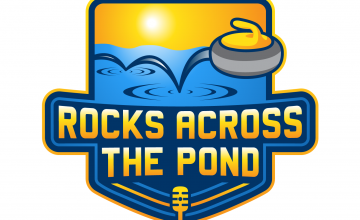This season on Rocks Across the Pond we are going to do a regular curling strategy series. Our intended audience for this is the club curler who would like to improve their own strategy and also gain a greater appreciation of strategy for when they watch curling on TV.
Here I want to lay out a few basic concepts. My personal opinion is that curling strategy is often taught in one of two ways – either as a set of rules (i.e. “when you don’t have hammer put up a center guard”) or like chess strategy (if team A does this, then you should do that, then they will do this, and you will do that).
The problem with the rules approach is that every rule has an exception. Center guards are great, but perhaps not so great if you are leading by three in the eighth end. While curling is often called chess on ice, it is rare that stones end up exactly where a team intended. And so very detailed plans can go out the window with a strange roll or a jammed shot.
So instead of teaching strategy via rules or like chess, I am going to try to explain the general principles of strategy. By principles I mean the basic ideas behind curling strategy that will help you understand why you might want to call a certain shot, what the possible options are, and how you might choose between those options.
At its core, curling strategy is about recognizing what the options are in a given situation and then choosing the best option for your team in that context.
Let’s begin with a few definitions: First of all, by strategy I mean a plan to achieve an overall goal. In curling there are three levels of strategy – the team strategy, the game strategy and the end strategy.
The team strategy is the general approach a team will take into its games. Is a team a takeout-first team? Is it always playing to score a big end? Is the team primarily concerned with maintaining control of the scoreboard?
One thing that should jump out if you watch curling on TV is different teams have different styles. Teams playing any of the styles I’ve listed above are capable of succeeding at the highest level. One of the things that separates good competitive teams from average club teams is competitive teams put the time into figuring out what their preferred style of play is.
Lesson 1 from this post is to sit down with your team early in the season and discuss what you preferred style of play is.
The second level of strategy is the game plan. If a team knows what its team strategy is, then they should figure out how to modify that strategy from game to game.
The reasons you might modify a game strategy are numerous. The ice conditions may dictate what kinds of shots are playable. The strengths and weaknesses of your opponent may dictate that you adjust your strategy. If you are playing in a big event you may want to modify things to account for stress (either yours or your opponents). During the pre-game meeting one thing your team should discuss is how you are going to approach the game.
Lesson 2: Have a pre-game meeting and decide on your game plan.
The third level of strategy is the end plan. At a minimum, teams should have three basic end plans: a) a standard approach for when the game is close; b) an aggressive approach for when they want to try and score a big end; c) a defensive approach for when they want to try and stop the other team from scoring.
Teams can of course get far more sophisticated than this – modifying end plans for things like ice conditions, who has hammer, an opponent’s weakness and stage of the game – but at a minimum a team needs a plan for how to attack, how to defend, and how to probe. We will get more into these three concepts in the next post. The end plan should be discussed during a brief chat by the team between ends.
Lesson 3: Have a quick meeting with your team to agree on your end strategy between each end.
Most people think of strategy as individual shot selection. Most of the discussions on TV are about individual shots. Most time outs are called to debate individual shots. But in my book individual shot selection is about tactics. I define tactics as the individual shots a team uses in order to execute its strategy. Strategy is about the plan, tactics are about the execution.
I will unpack this in future posts, but for now I just want to note that most teams only think in terms of tactics. They only focus, discuss and argue about what specific shots to call in a given situation without thinking about how it relates back to the larger strategy.
In my experience that is the single biggest mistake that most teams make when it comes to strategy – they don’t have any plan about what they are trying to accomplish, so they choose their individual shots at random.
There’s a famous expression – “all tactics no strategy.” In curling this applies to the team that goes on to the ice without a team strategy, a game strategy and an end strategy. Then they end up selecting shots (tactics) at random without thinking through how all the shots fit together into a larger plan.
In my experience most — maybe even 90% — of club teams have no strategy. And most competitive teams set aside time to talk about their plans as a team, for a game and for each end. If you want to get serious about your strategy, the first step is to commit as a team to develop strategic plans.
–by Jonathan Havercroft
